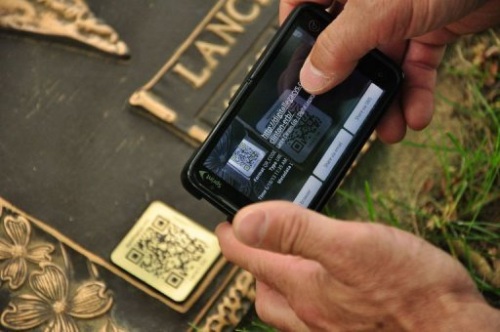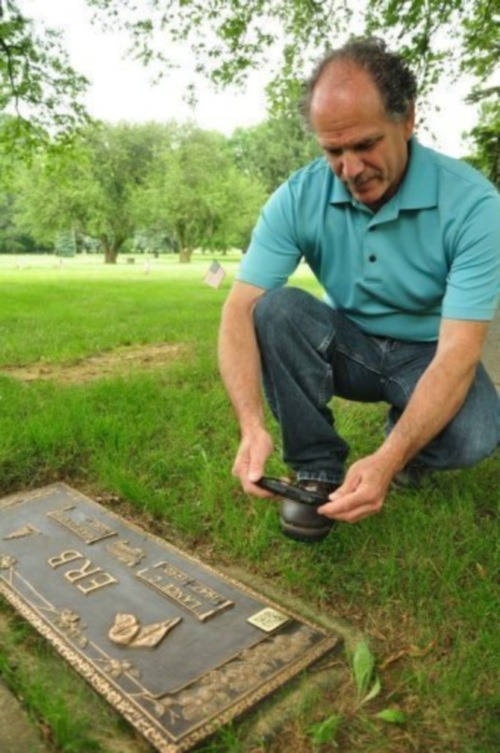A small barcode stuck on the side of a tombstone allows friends and families of those deceased to look through photos, listen to music, and post their feelings to various social media outlets, all from the site where their loved ones lay.

QR codes stuck to tombstones direct friends and families of the deceased to a personalized legacy web page.
A story released by the Agence France-Presse (AFP) details the peculiar approach that Philadelphia’s Sunset Memorial Park is taking to help visitors cope with the loss of their loved ones. Rick and Lorie Miller are the specialists providing this service, referred to as a client’s “Digital Legacy,” and they’re one of just a few to offer it in the United States.
The technology involved isn’t terribly complicated — a weather-resistant QR code is adhered in the form of a square black box on the tombstone itself. All information pertaining to the deceased, from photographs to favorite music, can be accessed via this secure website when the individual’s assigned QR code is scanned using a smartphone or tablet. That’s all — the whole process takes just a few seconds.

Rick Miller reads a QR code on a memorial plaque at Sunset Memorial Park.
“It's very simple,” Rick Miller told AFP. “It is a great idea for a lot of reasons, particularly for young children who have had family members that they never got to know.”
And if family or friends want to update the online memorial, the Millers can take care of that too.
“It is such a great way to mix technology with the legacy of somebody, and have the ability to remember them and see them up close,” he added.
In terms of cost for this service, a lifetime subscription is $149.99, which includes the online memorial as well as the QR code being sent in the mail to the person(s) purchasing the service (this allows loved ones to apply the code to the tombstone as they see fit).
A year of the service is $99.99
While the initial knee-jerk reaction might be to criticize the Millers for trying to further profit from a family’s loss, their idea has actually received support from all parts of the United States, and even so far as Australia.
“It's a kind of lighthearted way to remember,” Lorie Miller said. “People come to the grave, talk to people, look at the pictures, and say 'I remember that wedding,' or 'I remember that suit' . . . ”
Rick Miller adds that there may be some benefit to using the technology for older cemeteries, where the codes can be applied to historic graves so visitors can have the chance to learn about historical events tied to the individuals laid to rest there.
Story via: phys.org
Advertisement
Learn more about Electronic Products Magazine





